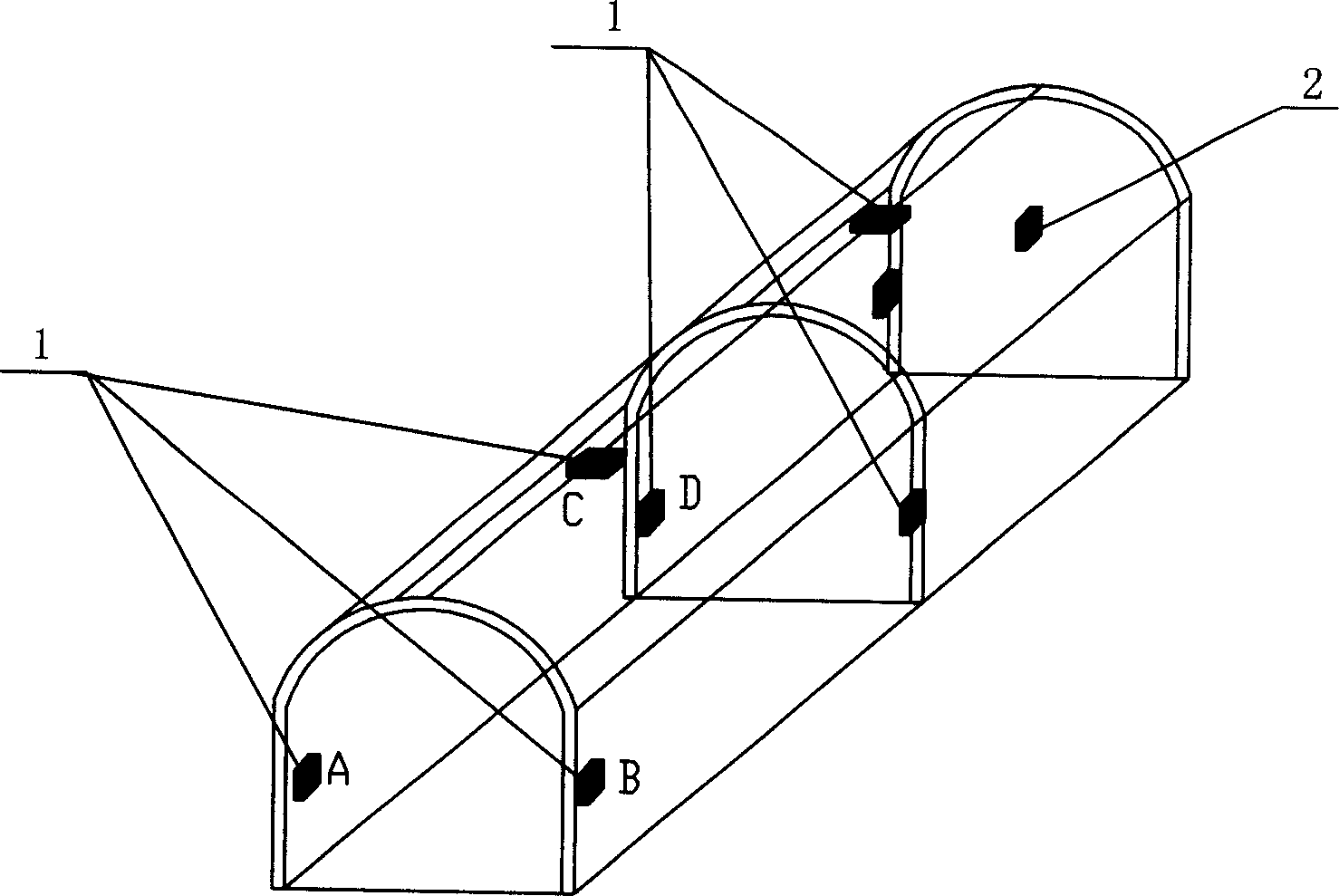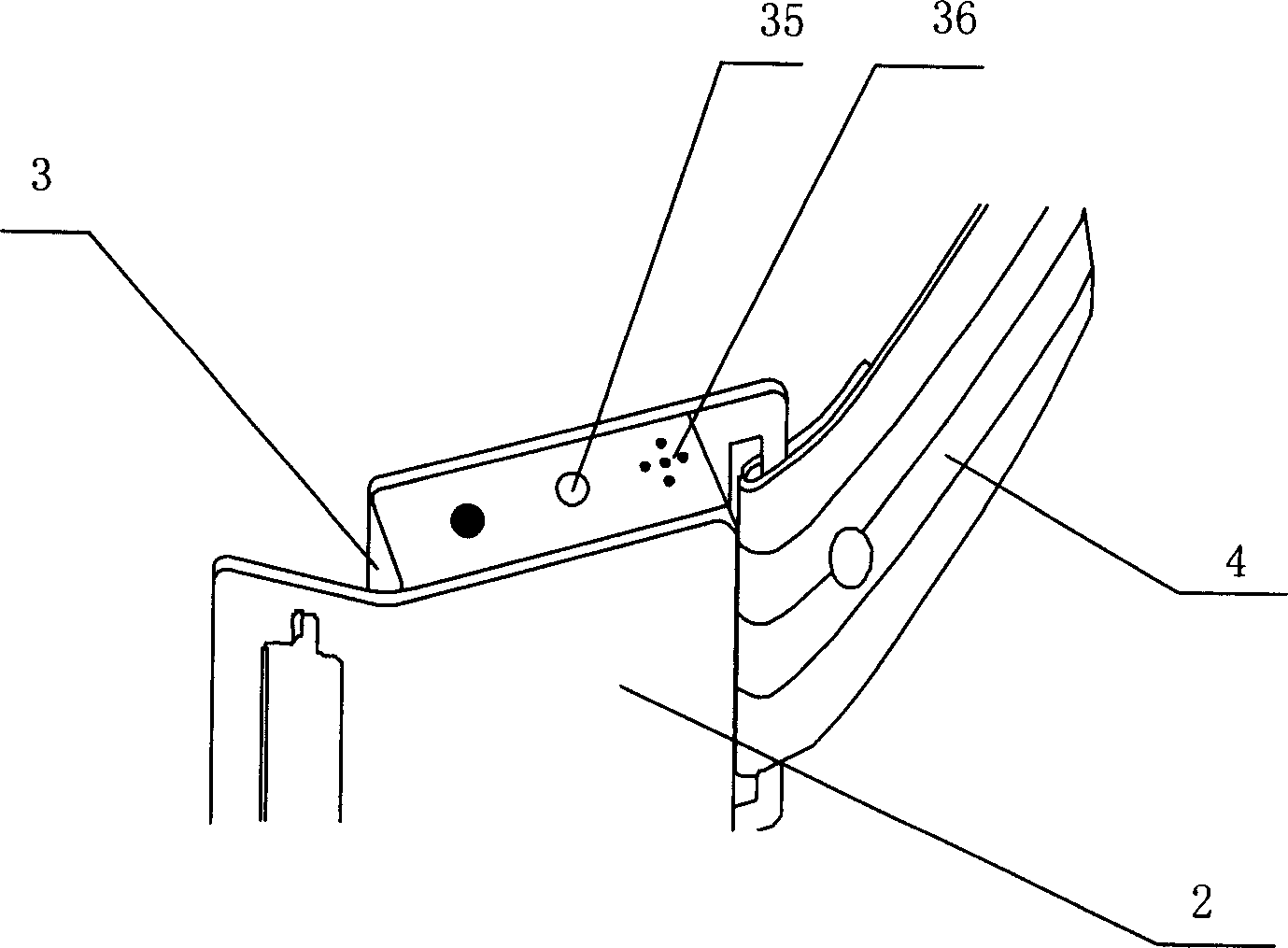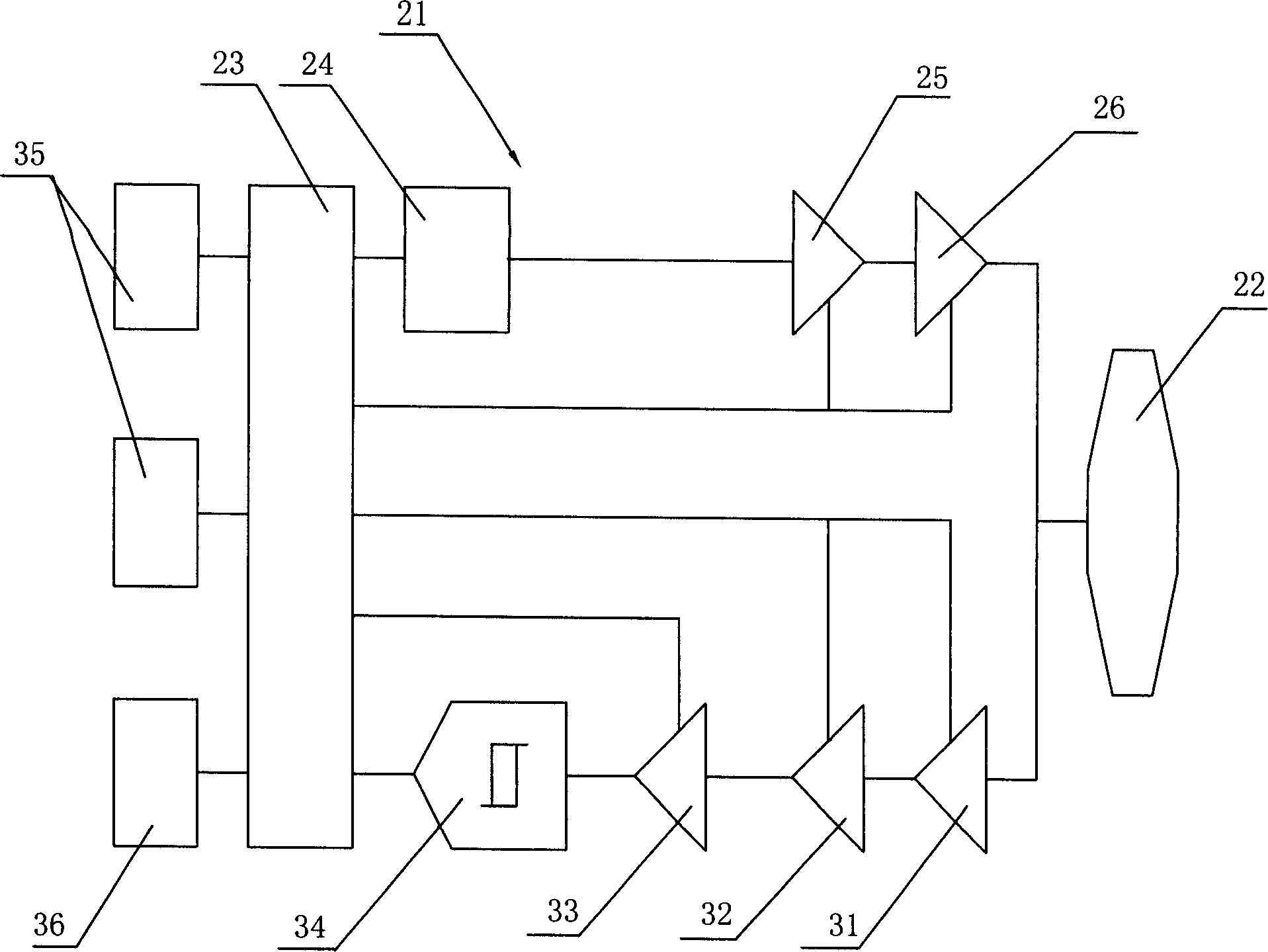Underground personnel locating and rescuing system and under ground personnel locating method
A personnel positioning and wireless technology, applied in the field of rescue systems, can solve the problems of not being able to find trapped miners, waste of effort, and bulky communication equipment, so as to improve mining efficiency and benefits, reduce self-loss, and improve rescue effects.
- Summary
- Abstract
- Description
- Claims
- Application Information
AI Technical Summary
Problems solved by technology
Method used
Image
Examples
Embodiment Construction
[0031] The present invention will be further described in detail below in conjunction with the accompanying drawings and embodiments.
[0032] As shown in the figure, an underground personnel positioning and rescue system includes a wireless monitoring node network composed of a plurality of wireless monitoring node groups 1 arranged along the mine road and a wireless tracker 2 worn by the miners. The distance between the node groups is 25 meters. The wireless monitoring node group 1 is composed of three wireless monitoring nodes. The three wireless monitoring nodes A, B, and C of the first group of wireless monitoring node groups are respectively set in the mine tunnel at the entrance of the mine tunnel. The two sides and the top of the belt, the wireless tracker 2 is a belt-type wireless tracker, including a tracker circuit 21 and a first antenna 22, the tracker circuit 21 is arranged on the belt head 3, and the first antenna 22 is arranged in the belt 4 The single-loop loop...
PUM
 Login to View More
Login to View More Abstract
Description
Claims
Application Information
 Login to View More
Login to View More - R&D
- Intellectual Property
- Life Sciences
- Materials
- Tech Scout
- Unparalleled Data Quality
- Higher Quality Content
- 60% Fewer Hallucinations
Browse by: Latest US Patents, China's latest patents, Technical Efficacy Thesaurus, Application Domain, Technology Topic, Popular Technical Reports.
© 2025 PatSnap. All rights reserved.Legal|Privacy policy|Modern Slavery Act Transparency Statement|Sitemap|About US| Contact US: help@patsnap.com



